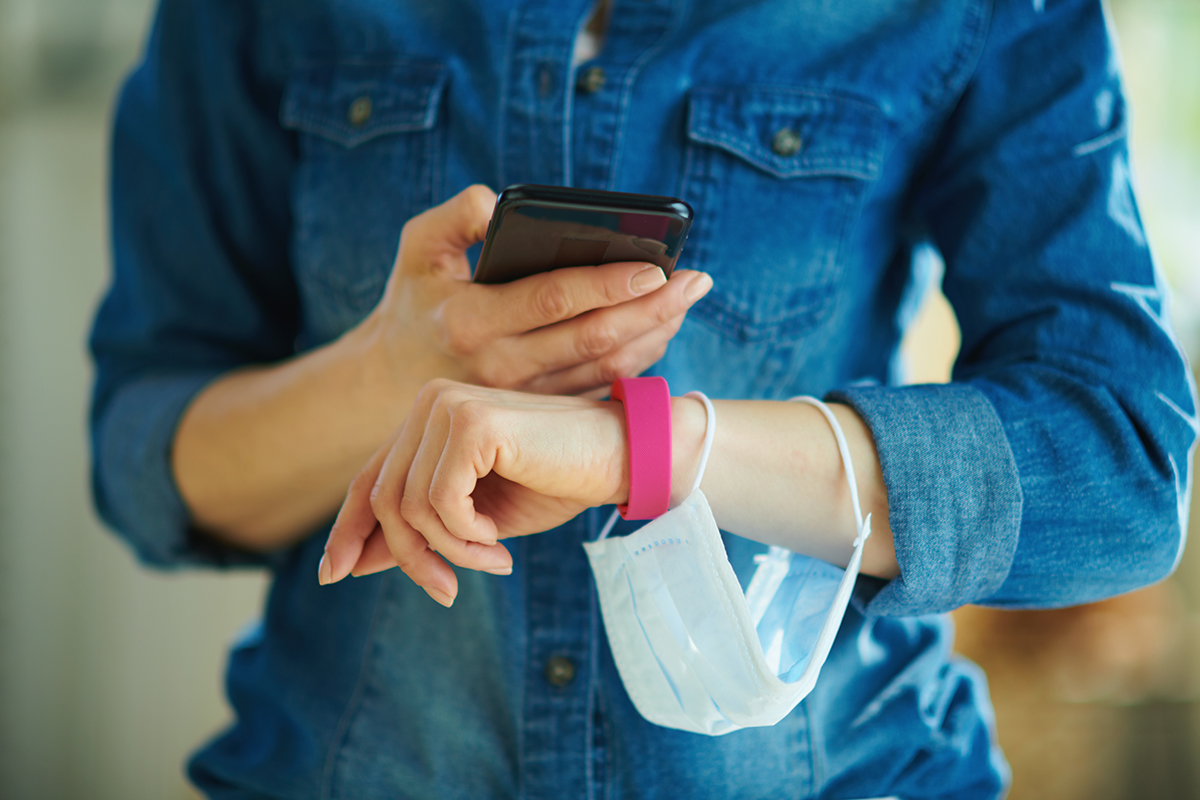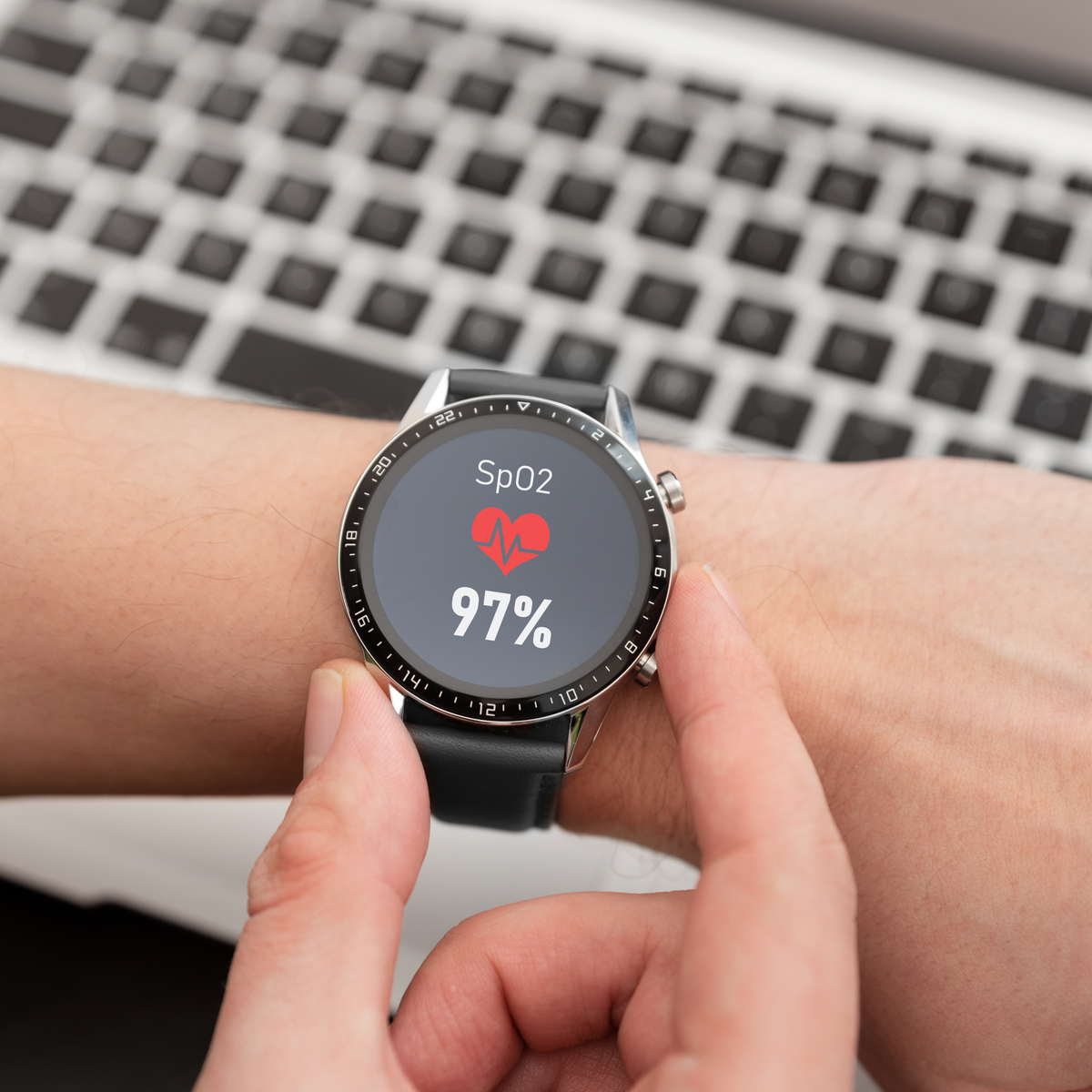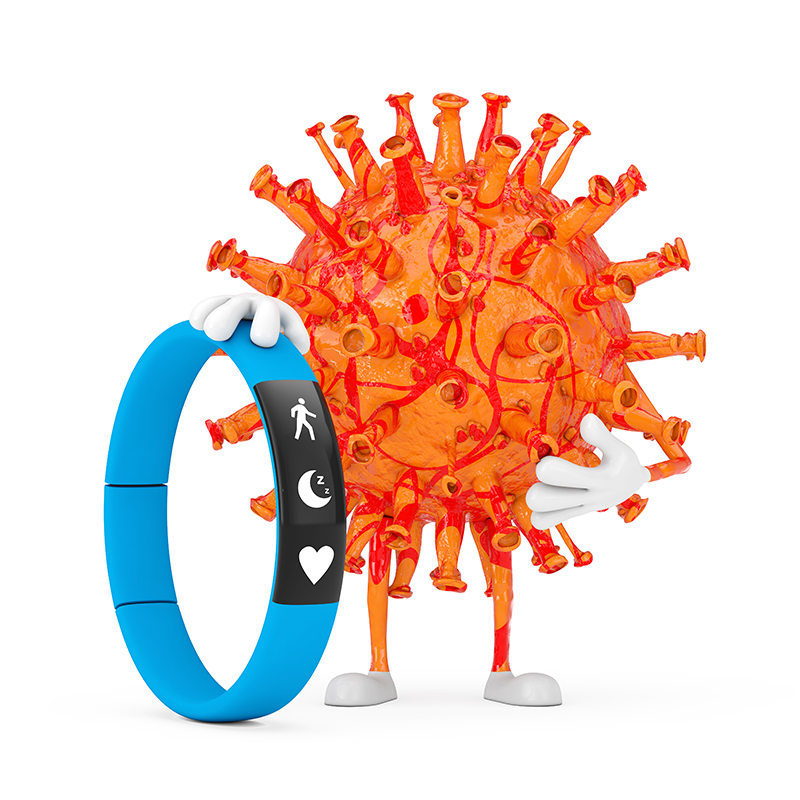As the global efforts to combat the COVID-19 pandemic continue, smart wearable devices are being harnessed in new ways to detect the coronavirus and limit its effects. Whether it’s contact tracing, social distancing, symptom signaling, or limiting face-touching, wearables are quickly becoming an integral part of the prevention process.

Wearable edge devices, such as smart fitness trackers, smartwatches, smart bands, and smart rings, can already monitor our health and biometric data continuously. However, by monitoring a baseline of our vital information, such as pulse and oxygen saturation, we can use the aggregated data to detect COVID-19 early on.
Early Detection
A recently concluded study at the University of California, San Francisco (UCSF) used the Oura™ Ring to study how an infection affected the users’ metrics. By examining the smart ring’s continuously generated temperature data, researchers were able to detect the illness even when the symptoms were subtle or would normally go unnoticed. At least one of three people infected with COVID-19 do not develop symptoms, so wearable devices like the Oura Ring offer a valuable alternative method of early detection.
Besides body temperature, the Oura ring also continuously measures sleep and wakefulness along with heart and respiratory rates. With data from over 65,000 participants, the researchers plan to use it to develop an algorithm that can identify when it appears the wearable user is becoming sick. Such an algorithm would alert users early on, while limiting potential exposure to frontline healthcare workers.

Predictive Algorithms
The race is on for an algorithm that can accurately predict the onset of COVID-19 in wearable devices. Studies like the one conducted at UCSF are underway across the United States, including another one at Purdue University. At Purdue, researchers conducted a study to determine if continuously collected biometric smartwatch data could be used to detect signs of the coronavirus early, accurately, and reliably.
Most smartwatches already track a wide range of physiological data, but factoring in the likes of heart rate, respiration rate, and heart rate variability can help detect COVID-19 at earlier stages. However, for a COVID-19 predictive algorithm to be accurate, it will likely need to consider massive amounts of data, which also need to be accurate. Future wearables equipped with this capability will need a powerful processor that has enough compute power, not only for the complex algorithms, but also to meet the market’s power demands.

Contact Tracing
A predictive algorithm for the coronavirus will enable wearable devices to identify patterns of the COVID-19 onset, so users can prepare and isolate sooner, call their doctor, and notify any people they have been in contact with. Contact tracing can be an effective method for containing the spread of the coronavirus, as wearable devices have been used as part of a nation-wide COVID-19 effort, notably in Singapore.
Despite the potential of using wearable devices for contact tracing, there are still limitations to its current effectiveness. An automated contact-tracing program can be highly effective only if most of a population is participating. Users who do not own a wearable device may be able to use their smartphones. But some users may not own a wearable device, nor a smartphone. Not to mention, there are existing privacy concerns, as wearable users may not wish to share their data with health authorities.
How Ambiq Contributes
For over a decade, Ambiq has been an industry leader in producing reliable and ultra-low-energy components for smart wearable technology. Since wearable devices continuously collect biometric and activity data at the edge of the connected network, their processors must be able to perform these tasks on a low electrical charge. System on Chips (SoCs) such as Ambiq’s Apollo Series can enable wearables to last for weeks or even months on a single charge.
Built on the patented Sub-threshold Power Optimized Technology (SPOT®) platform, Ambiq’s ultra-low power SoCs extend the processing capability and battery life in smartwatches and advanced wearable accessories to enable on-demand and around-the-clock health monitoring. With an abundance of application processing power, manufacturers can create wearables with greater device capability and an extended battery life. Check out Ambiq’s modern solutions for more details.


